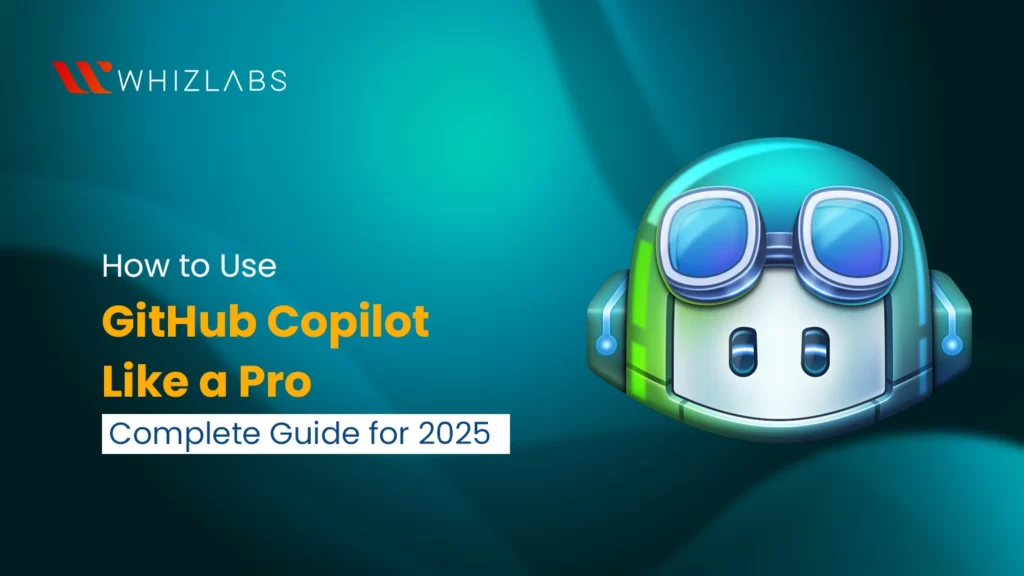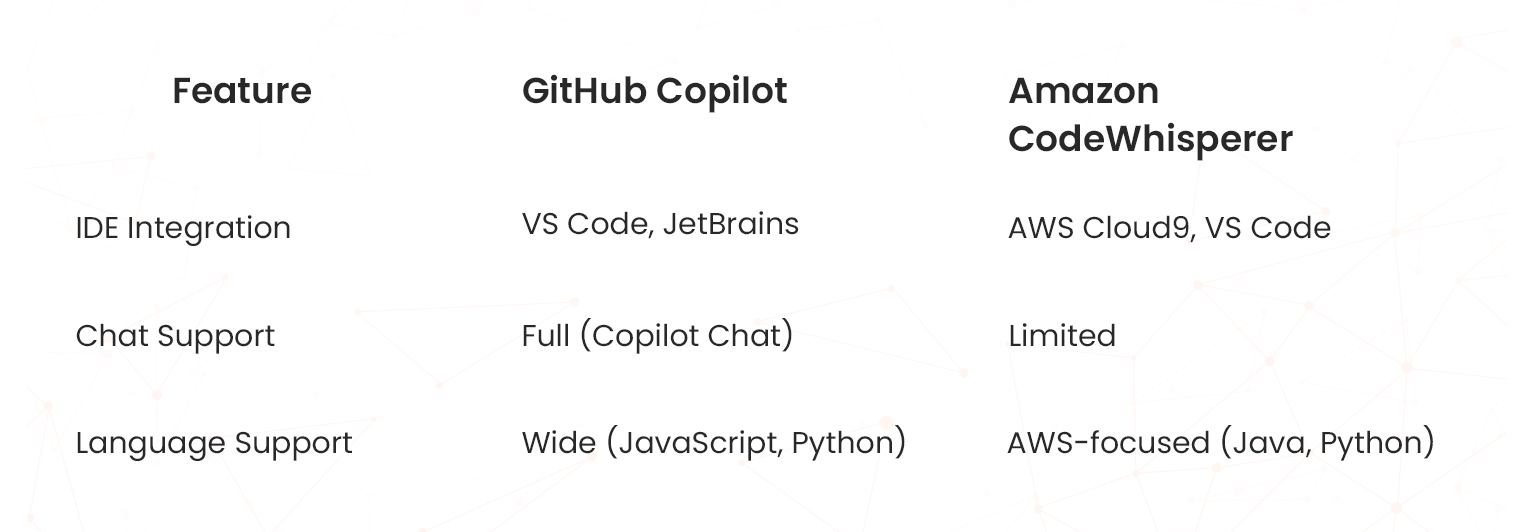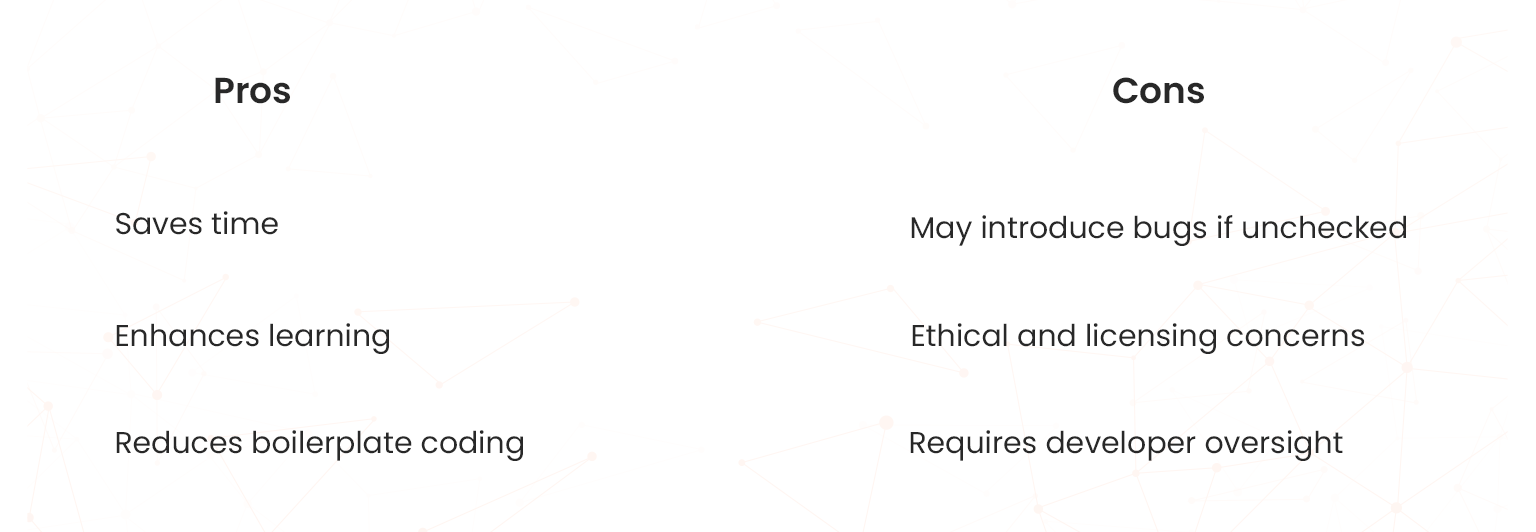In this blog, we will delve into learning how to integrate GitHub Copilot seamlessly into your coding environment. So, what is GitHub Copilot? It is an AI-powered code implementation tool in collaboration with OpenAI. It is developed by GitHub. Copilot intelligently understands the context of the code, fills in reusable code, allowing developers to write code faster, smarter, and with fewer errors by suggesting lines or blocks of code within popular IDEs like Visual Studio Code and JetBrains.
Who developed GitHub Copilot and Why?
By reducing repetitive coding and offering intelligent, context-aware recommendations based on comments and code structure, GitHub and OpenAI have created a system that speeds up software development.
Their goal was to construct an AI pair programmer that would reduce context-switching and boost efficiency by adjusting to developers’ processes. With the use of OpenAI’s Codex language paradigm, Copilot has completely changed how programmers approach learning and solving problems.
How It Works (Using AI and OpenAI Codex)
GitHub OpenAI Codex, a sophisticated AI model trained on billions of lines of public code and natural language text, powers Copilot. It makes use of machine learning to:
- Recognise the structure and context of the code
- Analyse developer prompts and comments
- Offer complete algorithms, loops, and functions.
Copilot helps you write and improvise your code quickly, regardless of your level of experience. From being a beginner to an expert developer, creating enterprise applications, Copilot plays a major role.
Why Use GitHub Copilot in 2025?
The Function of Copilot in Contemporary Software Development
By 2025, Copilot has emerged as a crucial tool for engineers, providing increases in efficiency at many phases of software development:
- Creating reusable code or boilerplate
- Getting acquainted with new frameworks or libraries
- Exploring solutions through AI-assisted pair programming
New Features in 2025
- Copilot Chat Enhancements: Smarter interactive debugging and explanations
- Better Prompt Context Memory: Monitors logic across the entire project
- Additional Language Support: Kotlin, Dart & Rust are currently supported
- Team Collaboration Tools: Real-time code suggestion syncing for dev teams
How GitHub Copilot Is Evolving With AI Trends
Copilot is staying ahead of the curve by:
- Integrating with GPT-4.5 and project-aware large language models
- Supporting AI-first workflows with minimal manual prompting
- Offering intuitive assistance for DevOps, CI/CD, and testing
Getting Started with GitHub Copilot
System Requirements
To use GitHub Copilot effectively:
- Visual Studio Code and JetBrains (IntelliJ, PyCharm) are supported IDEs.
- OS: Windows, Linux, and macOS
- Account: confirmed free tier or Pro GitHub account
How to Install GitHub Copilot?
- Launch your IDE and navigate to the Extensions Marketplace.
- Look up “GitHub Copilot” online.
- Click Install
- Sign in with your GitHub credentials
- Authorize the plugin access
Setting Up Your GitHub Account
- Create your GitHub account on github.com
- Choose a Copilot subscription, which comes with a 30-day trial, Pro, or Free for students.
- Link your GitHub account to the IDE extension
Do you wish to have hands-on experience with GitHub Copilot GH-300? Head over to Whizlabs GitHub Copilot Practice tests to validate your preparation and explore expert tips.
GitHub Copilot Use Cases & Examples
Writing Code with Copilot Suggestions
Simply start writing a comment like // fetch user data from API, and Copilot will suggest a fully working function.
Completing Functions, Classes, and Logic
Copilot understands the structure of your code and can:
- Complete class methods
- Implement sorting and filtering logic
- Generate utility functions like formatters
Building Web Apps with Copilot
If you’re building a React app or a Node.js backend, Copilot helps by:
- Creating reusable components
- Generating route handlers and APIs
- Styling pages with responsive design snippets
Debugging and Testing With AI Support
Copilot can:
- PyTest, Jest, or Mocha can be used to create unit test.
- Provide solutions for typical runtime issues.
- Provide assertions and mock data
Advanced Tips to Use GitHub Copilot Like a Pro
Writing Prompts That Generate Better Code
Use clear, concise prompts:
- # Function to reverse a string
- // Validate user login credentials
- /* SQL query to find top 5 customers */
Leveraging Copilot Chat for Problem Solving
Copilot Chat allows you to:
- Ask code-related questions within the IDE
- Request explanations of functions or bugs
- Refactor the code with just a prompt
How to Control Output and Suggestions
- Cycle through suggestions with Tab
- Adjust the verbosity in settings
- Use inline comments to guide Copilot’s logic
Integrating With Other AI Tools
You can integrate the Copilot with other AI tools like ChatGPT, Replit AI by following the below steps:
- Use ChatGPT to code review and optimization
- Pair Copilot with Replit AI for seamless browser-based coding
On that note, if you are more interested in GitHub, begin your preparation for the GH-900 and ace your exam confidently now. Also, check if your foundations are strong while you are at it.
GitHub Copilot Limitations and Ethical Concerns
Code Licensing & Attribution
Although Copilot generates original code, it may reflect patterns from public repositories. Always review and verify licenses before publishing or deploying.
Data Privacy & Code Security
Avoid exposing sensitive business logic or proprietary data. Copilot is not trained on private repos (unless specifically allowed), but always use caution.
Handling Biased or Unsafe Code Suggestions
Copilot can occasionally suggest insecure patterns (e.g., hardcoded credentials). As a best practice:
- Use linters and static analyzers
- Never blindly trust AI-generated security code
GitHub Copilot Alternatives (2025 Comparison)
Copilot vs CodeWhisperer
Copilot vs Replit AI
- Replit AI excels in cloud-native real-time dev
- Copilot offers deeper IDE integration and richer prompt understanding
Copilot vs Tabnine
- Tabnine: Local inference, privacy-focused
- Copilot: Cloud-based, context-rich, powered by OpenAI Codex
FAQs on GitHub Copilot in 2025 Is GitHub Copilot Free?
Copilot is:
- Free for verified students, open-source maintainers, and educators $10/month for individuals
- $19/user/month for teams
Compatible programming languages
Python, JavaScript, TypeScript, Go, PHP, SQL, Rust, and many more languages that Copilot supports.
Some of the best practices:
- Always verify Copilot’s code for logic and security purposes
- Keep learning — don’t rely solely on suggestions
- Integrate a version control option and code review
Is GitHub Copilot Worth It in 2025?
Recommendations for Developers, Students, and Teams
- Students: Use Copilot to learn by doing
- Pro Developers: Boost productivity and explore alternatives
- Dev Teams: Combine Copilot with pair programming and review workflows
Visit Whizlabs GitHub Copilot Hands-on Labs to accelerate your AI coding journey with hands-on labs, mock projects, and mock tests. You can practice Copilot with real-world challenges.
Conclusion
As read, this blog spoke about how you can use the GitHub Copilot and make the best out of it. We suggest that you follow this guide to use GitHub Copilot like a pro. Good luck on your cloud certification journey!
- AI-900 Explained Simply: What You’ll Learn as a Beginner? - December 3, 2025
- How to Use GitHub Copilot Like a Pro 2025 Guide - July 28, 2025
- AZ-104 Networking Concepts Explained for Beginners - July 4, 2025
- How do you configure Azure Site Recovery for AZ-800? - May 16, 2025
- How Does AZ-140 Help in Managing Azure Virtual Desktops? - March 7, 2025
- What Are AZ-800 Key Concepts for Role-Based Access? - February 18, 2025
- Simplifying Azure Dev Workflows with the Azure Developer CLI - February 7, 2025
- MD-102:Endpoint Administrator – Syllabus Update Sept 17, 2024 - September 24, 2024



